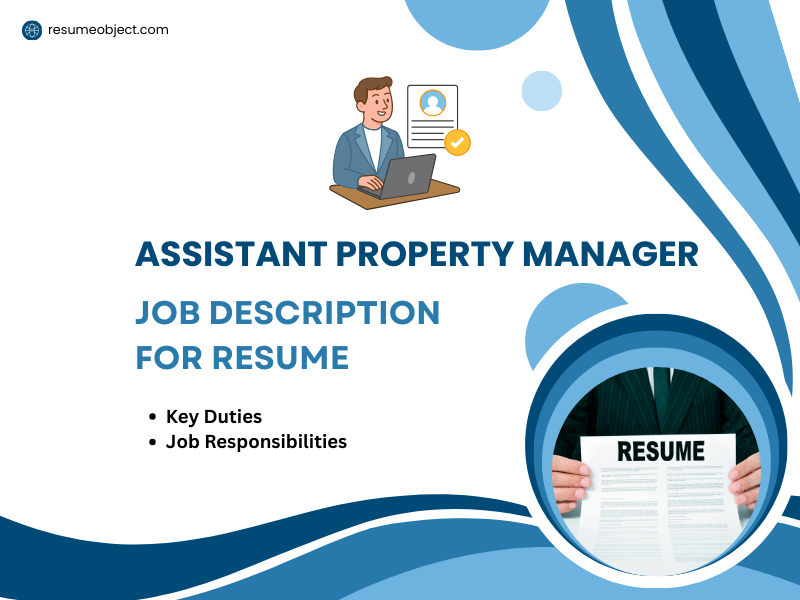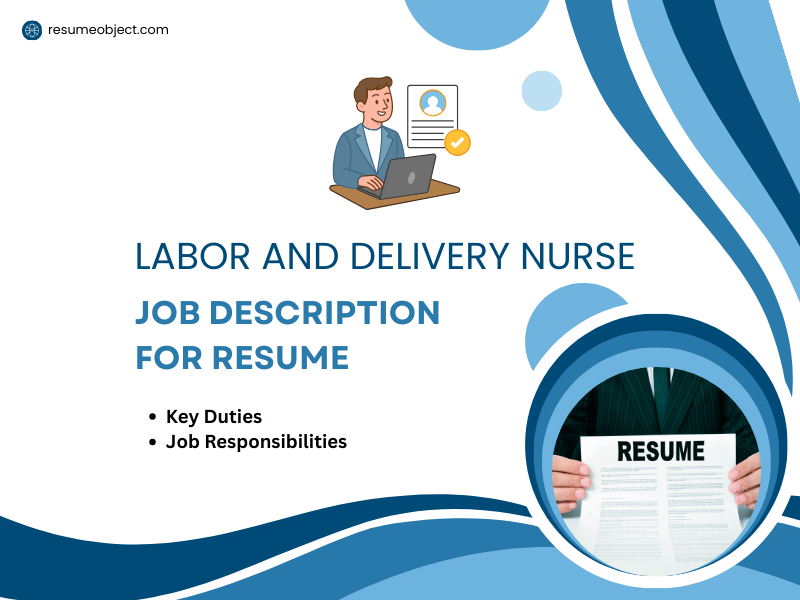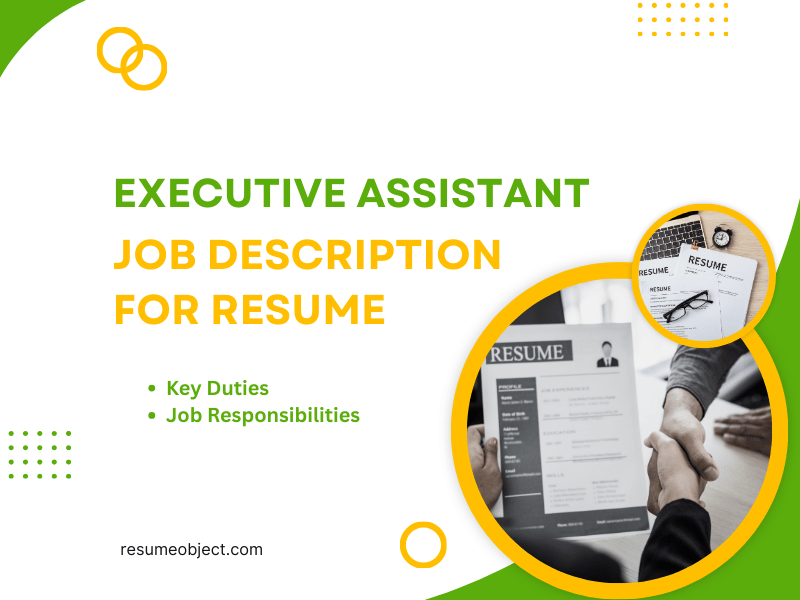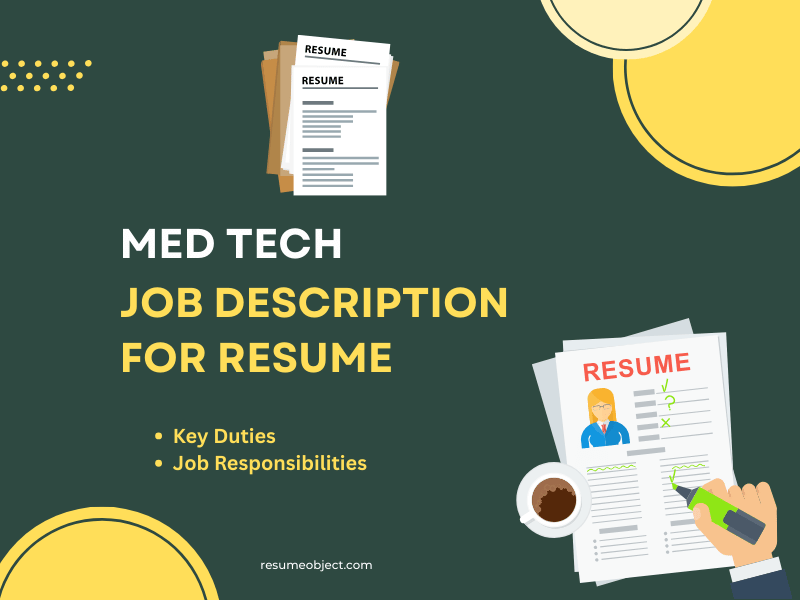Learn how many references you should include on a resume, who to choose, what details to provide, and best practices for modern job applications. References can play a pivotal role in your job application, offering employers a third-party perspective on your skills, work ethic, and character. However, deciding how many references to include, where to list them, and when to provide them can be confusing. At ResumeObject, we’re committed to empowering job seekers with free resume templates, samples, and guides to navigate the job market successfully.
This in-depth article explores how many references you should have on a resume, best practices for managing references, and strategies to ensure they enhance your application, helping you impress hiring managers and secure your desired role.
Why References Matter in a Job Application
References are individuals who can vouch for your qualifications, typically former supervisors, colleagues, or academic mentors. They provide employers with insights into your performance, reliability, and cultural fit, often serving as a final validation before an offer is extended.
According to a 2024 survey by SHRM, 87% of employers conduct reference checks for at least some positions, underscoring their importance.
Including references strategically can:
- Build Credibility: Validates your resume claims with third-party endorsements.
- Highlight Fit: Shows how your skills align with the role through others’ perspectives.
- Differentiate You: Strong references can set you apart in a competitive pool.
- Support Career Transitions: Bridges gaps for those changing industries or re-entering the workforce.
However, mismanaging references such as including too many, listing them on your resume, or choosing inappropriate contacts, can weaken your application. Understanding how to handle references is critical for a polished, professional presentation.
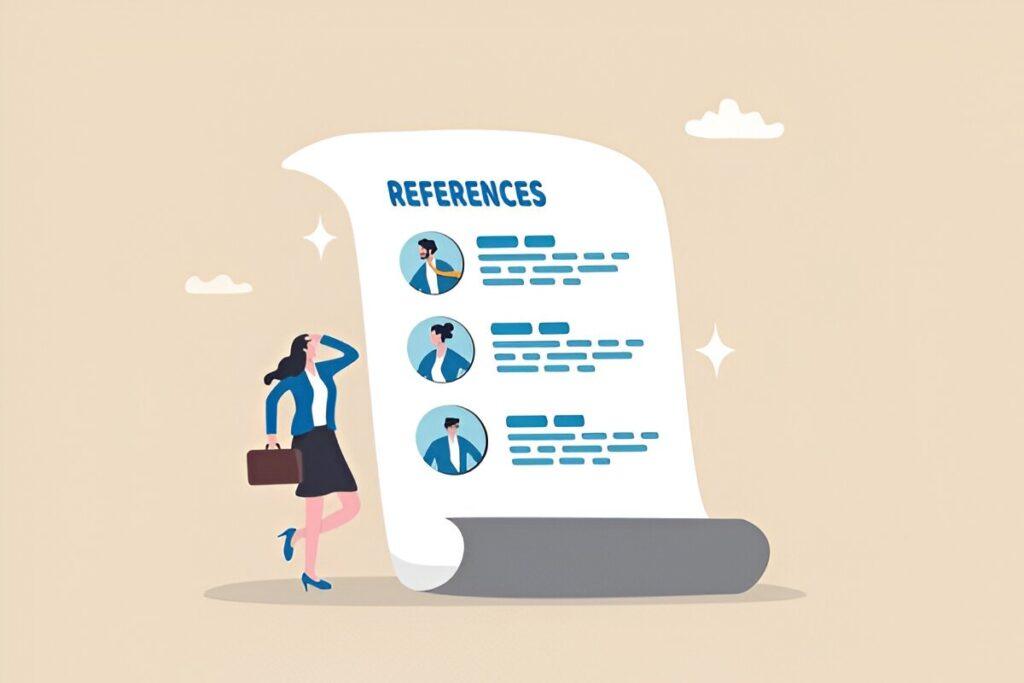
Should You Include References on Your Resume?
The short answer is: generally, no. Modern resume standards discourage listing references directly on your resume for several reasons:
- Space Constraints: Resumes should be concise (1-2 pages), and references consume valuable space better used for skills or achievements.
- Privacy Concerns: Including contact details exposes your references to unsolicited outreach.
- Premature Sharing: Employers typically request references later in the hiring process, often after an interview.
- ATS Compatibility: References may confuse applicant tracking systems, reducing your resume’s effectiveness.
Instead, create a separate reference sheet to provide when requested, typically during or after an interview. The phrase “References Available Upon Request” is also outdated and unnecessary, as employers assume you can provide references if asked. However, there are exceptions where references may be included or mentioned, which we’ll explore later.
Also Read: How to Include Soft Skills in Resume Without Sounding Generic
How Many References Should You Have?
The number of references you should prepare depends on the job level, industry, and employer expectations. Here are general guidelines:
Standard Number of References
- Most Positions: 3-5 references is typical for most roles, from entry-level to mid-career. Three is often sufficient, but having up to five allows flexibility if some are unavailable.
- Senior or Executive Roles: 5-7 references may be required, as employers seek extensive validation of leadership and strategic impact.
- Academic or Research Positions: 3-6 references, often including academic advisors or collaborators, are common for CVs.
- Entry-Level or Internships: 2-4 references, such as professors or internship supervisors, are usually adequate.
Factors Influencing the Number
- Job Requirements: Some employers specify the number (e.g., “provide 3 references”). Check the job posting or ask during the interview process.
- Career Stage: Early-career candidates may have fewer professional contacts, while senior professionals may need more to cover diverse experiences.
- Industry Norms: Creative fields (e.g., marketing, design) may require fewer references, while regulated industries (e.g., healthcare, finance) may demand more for thorough vetting.
- Availability: Ensure your references are reachable; having extra options mitigates risks if someone is unresponsive.
General Recommendation
Prepare three strong references as a default, with two additional backups, totaling five. This balances quality, manageability, and employer expectations. Select references who can speak to your most relevant skills and recent experiences, ensuring they align with the job’s requirements.
How to Choose the Right References
The quality of your references is more important than quantity. Choose individuals who can provide specific, positive insights about your abilities. Consider these criteria:
- Professional Relevance: Prioritize recent supervisors, managers, or colleagues who have directly observed your work. For entry-level candidates, professors, internship coordinators, or volunteer supervisors are suitable.
- Recency: Select references from the past 5-7 years to reflect current skills, unless older contacts are highly relevant (e.g., a mentor for a senior role).
- Specificity: Choose those who can discuss concrete achievements, such as “increased sales by 20%” or “led a team project.”
- Reliability: Ensure references are responsive and willing to provide a positive endorsement.
- Diversity of Perspectives: Include a mix of supervisors (for authority), peers (for teamwork), and subordinates (for leadership), if applicable.
Example Reference Types:
- Supervisor: “Jane Smith, Marketing Director, supervised campaign strategies.”
- Colleague: “John Doe, Senior Developer, collaborated on software projects.”
- Professor: “Dr. Emily Brown, advised on capstone project.”
List 5-7 potential references, contact them to confirm their willingness, and prioritize the top three based on job fit.
When to Include References on a Resume or Application
While references are typically omitted from resumes, there are exceptions where including them or mentioning them is appropriate:
- Employer Request: If the job application explicitly asks for references on the resume or in the initial submission, include them as instructed (e.g., in a separate section or document).
- Academic CVs: For academic or research roles, CVs often include 3-6 references at the end, as they are standard in these fields.
- Small Industries or Networks: In niche fields or small communities, listing a well-known reference on your resume can add credibility.
- Job Application Forms: Some online forms require reference details upfront; provide them as requested.
Example (Academic CV):
References
Dr. Robert Lee, Professor, University of Texas
[email protected] | (512) 555-7890
Jane Carter, Research Supervisor, BioLab
[email protected] | (512) 555-2345
Review the job posting for reference requirements and prepare a separate reference sheet unless otherwise directed.
How to Format a Reference Sheet
A reference sheet is a standalone document listing your references, provided when requested. Here’s how to format it professionally:
- Header: Match your resume’s header (name, contact info) for consistency.
Example:
Jane Doe
[email protected] | (512) 555-1234 | Austin, TX - Title: Use “Professional References” or “References” centered at the top.
- Reference Details: For each reference, include:
- Full name
- Job title
- Company/organization
- Email address
- Phone number
- Brief description of your relationship (e.g., “Former Supervisor, managed marketing campaigns”).
Example:
John Smith
Marketing Director, BrandWorks
[email protected] | (312) 555-5678
Relationship: Former Supervisor, oversaw digital marketing projects from 2020-2023.
- Layout: Use a clean, ATS-friendly format with standard fonts (e.g., Arial, 11-point), 1-inch margins, and single spacing within entries, double spacing between them.
- Length: Typically one page, listing 3-5 references.
Create a reference sheet with 3-5 references, matching your resume’s formatting, and save it as a PDF for submission.
Best Practices for Managing References
To ensure your references enhance your application, follow these best practices:
- Ask Permission: Always contact potential references to confirm their willingness and availability. Provide context about the job and skills you’d like them to highlight.
- Prepare Your References: Share your resume, the job description, and key achievements to help them tailor their responses. For example, “Please emphasize my leadership in the 2023 project.”
- Keep Them Updated: Inform references when you expect they’ll be contacted, and thank them afterward, regardless of the outcome.
- Diversify Your List: Rotate references for different applications to avoid overburdening one person, especially if applying to multiple jobs.
- Maintain Relationships: Stay in touch with references through occasional emails or LinkedIn updates to ensure they remain willing to support you.
Reach out to your top 5 references, confirm their consent, and provide them with your updated resume and job details.
Examples of Reference Sheets
Below are excerpts from reference sheets for different job categories, illustrating proper formatting and content.
Marketing Manager (Marketing & Advertising)
Jane Doe
[email protected] | (512) 555-1234 | Austin, TX
Professional References
Sarah Johnson
Marketing Director, BrandWorks
[email protected] | (512) 555-5678
Relationship: Former Supervisor, managed digital marketing campaigns from 2020-2023.
Michael Lee
Senior Content Strategist, AdCorp
[email protected] | (512) 555-2345
Relationship: Colleague, collaborated on 5 major campaigns in 2022.
Dr. Emily Brown
Professor of Marketing, University of Texas
[email protected] | (512) 555-7890
Relationship: Academic Advisor, supervised capstone project in 2019.
Software Developer (Information Technology)
John Smith
[email protected] | (415) 555-5678 | San Francisco, CA
Professional References
Lisa Carter
Engineering Manager, TechCorp
[email protected] | (415) 555-1234
Relationship: Former Supervisor, oversaw software development projects from 2021-2024.
David Kim
Senior Developer, CodeZap
[email protected] | (415) 555-4567
Relationship: Colleague, paired on 10+ coding projects in 2023.
Dr. Robert Lee
Professor of Computer Science, UC Berkeley
[email protected] | (415) 555-7890
Relationship: Thesis Advisor, guided machine learning research in 2020.
Common Mistakes to Avoid
When managing references, avoid these pitfalls:
- Listing References on the Resume: Unless explicitly requested, keep references off your resume to save space and protect privacy.
- Using “References Available Upon Request”: This phrase is outdated and assumed; omit it.
- Choosing Inappropriate References: Avoid personal contacts (e.g., family, friends) or outdated contacts unable to speak to recent skills.
- Providing Unprepared References: Failing to notify references can lead to vague or unenthusiastic responses.
- Including Too Many References: More than 5-7 can overwhelm employers; stick to 3-5 unless otherwise specified.
Tips for Different Career Stages
- Entry-Level Candidates: Use professors, internship supervisors, or volunteer coordinators, e.g., “Dr. Smith, supervised research project.”
- Mid-Career Professionals: Prioritize recent supervisors or colleagues, e.g., “Managed 5-person team under Jane Doe.”
- Career Changers: Select references who can highlight transferable skills, e.g., “Collaborated on client projects with John Lee.”
- Senior Professionals: Include high-level contacts like directors or clients, e.g., “Oversaw $1M project for Sarah Johnson.”
- Returning to Workforce: Use recent volunteer or freelance contacts, e.g., “Coordinated events for Michael Kim.”
Customizing for Different Industries
Reference expectations vary by industry:
- Information Technology: Include technical supervisors or project leads, e.g., “Led coding projects under Lisa Carter.”
- Healthcare: Use clinical supervisors or educators, e.g., “Managed patient care under Dr. Brown.”
- Marketing: Highlight creative or client-facing references, e.g., “Developed campaigns for Sarah Johnson.”
- Education: Include academic or administrative contacts, e.g., “Taught under Principal Lee.”
- Finance: Use managers or auditors, e.g., “Streamlined budgets for Michael Kim.”
References for Non-Traditional Experience
If you lack formal work experience:
- Internships: “Jane Carter, Internship Supervisor, oversaw marketing tasks.”
- Volunteer Work: “John Lee, Volunteer Coordinator, managed 5 events.”
- Academic Projects: “Dr. Emily Brown, Professor, advised on thesis.”
- Freelance Work: “Michael Kim, Client, commissioned 3 design projects.”
When and How to Provide References
- Timing: Submit references when requested, typically after an interview or upon a conditional offer. Some applications require them upfront; follow instructions.
- Method: Email the reference sheet as a PDF or include details in an online form. Ensure formatting matches your resume.
- Follow-Up: Notify references before they’re contacted and thank them afterward to maintain goodwill.
Action: Save your reference sheet as a PDF, ready to send when requested, and confirm with references before sharing their details.
Testing and Refining Your Reference Approach
- Verify Contact Info: Confirm reference emails and phone numbers are current.
- Test Responses: Ask references how they’d describe your skills to ensure alignment.
- Tailor for Each Job: Adjust your reference list to emphasize job-specific skills.
- Seek Feedback: Ask a mentor to review your reference sheet for professionalism.
References vs. Other Application Components
- Resume: Lists your achievements; references validate them.
- Cover Letter: Narrates your fit; references provide external perspectives.
- LinkedIn: Complements references with endorsements or recommendations.
Final Thoughts
Deciding how many references to have on a resume is a strategic choice that can enhance your job application when handled correctly. Generally, avoid listing references on your resume, preparing a separate reference sheet with 3-5 high-quality contacts instead.
Choose relevant, recent references, format the sheet professionally, and provide it when requested. Notify and prepare your references, avoid common mistakes like outdated contacts, and tailor your approach to your career stage and industry. At ResumeObject, we’re here to support your job search with free resources. Start refining your resume and references today with our templates and samples!
FAQs about References in Resume
Should I Include References Directly on My Resume?
It is generally not recommended to include references directly on your resume unless explicitly asked by the employer. Including them can take up valuable space that should be used to showcase your skills, achievements, and experiences. Instead, have a separate document ready to share upon request. Most hiring managers expect this format today.
How Many References Should I List for a Job Application?
Typically, 3 to 5 professional references are sufficient for most job applications. Choose individuals who can speak directly to your skills, work ethic, and accomplishments. Including too many references can be overwhelming, and too few might not provide enough credibility. Tailor your reference list to the job’s level and industry expectations.
Who Should I Choose as My References?
You should choose supervisors, managers, colleagues, clients, or mentors who can positively speak about your work ethic, achievements, and character. Avoid using family or friends unless you worked with them professionally. Select individuals who know you well and can provide specific, detailed examples of your contributions and strengths.
Should I Use “References Available Upon Request” on My Resume?
Using “References available upon request” is outdated and unnecessary. Most employers assume you will provide references when asked. Including this phrase can waste valuable resume space that could be better used for achievements or skills. Instead, prepare a separate, well-organized reference sheet to share when the time comes.
Do I Need to Inform My References Before Using Them?
Yes, always contact your references beforehand to ask their permission and ensure they’re comfortable speaking on your behalf. Share details about the roles you’re applying for, your resume, and any key points you’d like them to emphasize. Giving them context allows them to provide more relevant and impactful recommendations.
What Information Should I Include for Each Reference?
Each reference entry should include the person’s full name, job title, company name, relationship to you, phone number, and professional email address. It’s also helpful to briefly note how you worked together (e.g., “Former Manager at XYZ Company”) to provide context for hiring managers reviewing the reference list.
Can I Use a Personal Reference If I Have No Work Experience?
If you’re just starting out and lack professional experience, you can use character references such as teachers, coaches, community leaders, or mentors. Ensure these individuals can genuinely speak to your reliability, work ethic, and personal strengths. While not ideal, strong character references can still make a meaningful impression.

